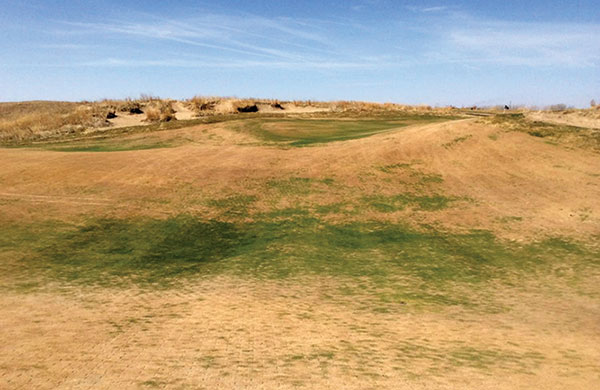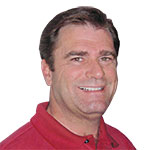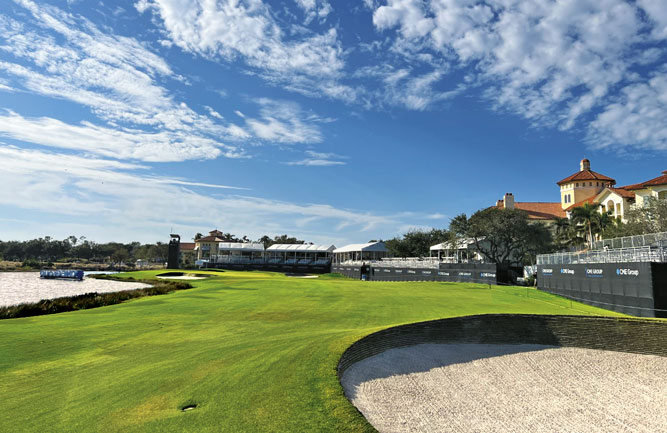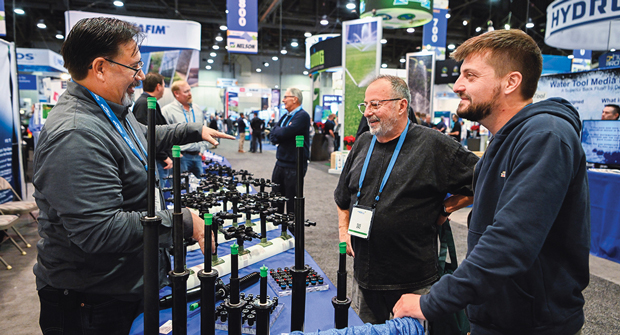Experts’ Insights: Why dry conditions are the enemy

Desiccation on turfgrass occurs in late winter months due to lack of moisture. (Photo: Bill Kreuser, Ph.D.)
Desiccation on turfgrass tends to become a problem in the later winter months, January or February, says Bill Kreuser, Ph.D. He studied desiccation extensively during his time with the University of Nebraska.
Superintendents in drier winter climates often lightly water greens or high-value surfaces during those months to keep turfgrass alive.
Kreuser says desiccation is on one extreme of winter injury — the lack of moisture — and crown hydration injury is on the opposite end of the spectrum with too much moisture.
“Grass plants dry out going into winter to make them hardier,” he says. “And if grasses like annual bluegrass absorb too much water, like during a January rainfall event, then there’s too much water in the plant, and when it freezes, it dies. Desiccation is the same thing. It’s just on the other side of dry. So, if it gets too dry, then a cold snap can kill it.”
Desiccation is more problematic for bentgrasses, ryegrasses, rough bluegrasses and even bermudagrasses in the South, but, as Kreuser mentions, annual bluegrass is also susceptible in the right conditions.
Prevention of desiccation from too little moisture starts in the fall, ensuring the turf has some moisture, especially in those areas of the course where there are drier patches. Deploying wetting agents can help in those problematic areas. Turf covers can also help protect turf, too.
“A blanket of sand is really important in those high-value areas, even in the Southeast on bermudagrass greens,” he says. “Protecting those crowns is really crucial.”
Kreuser says shady areas on turf are more susceptible to any type of winter injury or stress as the shade makes it more difficult for the turf to harden off for winter, and the turf is most likely weaker in those shady areas.

Garry Sullivan
Green Jacket
Garry Sullivan
Vice president of sales
Turf Covers for desiccation? Which type: impermeable or permeable? Green Jacket is an impermeable cover that provides a barrier of protection to the crown of the plant. High winds that cause desiccation simply hit and bounce off the impermeable cover while it holds in moisture the green and soil contained before being covered for the winter season. Studies by well-known universities confirm that by keeping the moisture away from the turf crown, we can increase positive results needed to avoid crown hydration, ice damage and desiccation. GreenJacket has a calculated light transmission property (UV resistant) that blocks out approximately 30 percent of the sunlight. This helps to keep turf dormant during the temperature fluctuations that have become more the norm than the exception.

Bill Thompson
Evergreen Turf Covers
Bill Thompson
Sales manager
The ever-changing weather patterns have made it more critical than ever before to protect your greens — your investment — and to sustain your expected level of play with no interruptions. The ravaging effects of sustained freeze temperatures on warm-weather grasses were evident in many parts of the South with lasting effects. In addition, wind desiccation throughout the Midwest and Northern states were also impacted with similar results. In these areas, it was the proactive superintendents who were able to survive and move forward with no injuries to their turf. Whether it’s wind desiccation or extended freeze conditions, turf covers’ insulation characteristics provide the insulating barrier and protect from the effects of Mother Nature. The loss of play and the cost to get your greens ready for play far outweigh the investment of a cover.

Kyle Hegland
Sand Hills Golf Club, Mullen, Neb.
Kyle Hegland
Superintendent
Sand Hills Golf Club is in the very middle of the Nebraska Sandhills, the only native prairie grassland left in North America. At 3,300 feet of elevation, our temperatures fluctuate very dramatically during the summer and even in the winter. Summer brings on average 30-plus days of 100-plus degree heat, while the winter temps dip well below 0 degrees F. Huge temperature swings in the winter are what cause desiccation on our turfgrass. We have huge warmups (daytime highs in the 60s), while only a couple of days later, we can be below 0 (not counting wind chill). The Sandhills of Nebraska is one of the windiest places in the country. Desiccation means warm daytime temps coupled with high winds. When this happens, there is a small window of time to get moisture to the plant that desperately needs it. If we do not have an action plan in order, we are going to see desiccation. Mother Nature is undefeated, and some years, despite the best-laid plans, we will still see the effects of desiccation and winter injury. Our main objective is to have our grass plants as healthy as possible leading into winter. Prior to our irrigation blowout, we make sure all playing surfaces have as much moisture as possible, focusing on greens. We are a semiarid climate, averaging 18.5 inches of moisture per year, with relatively little moisture coming from December to February. We do have a frost-free winter watering system, which allows us to irrigate when the temperatures get above freezing. Any days in the winter where we are dry and above freezing, we irrigate as needed. Like any superintendent, we focus on greens first, and we deal with a lot of dead grass on fairways before we can deal with any dead grass on greens. Plant health is a big factor in minimizing desiccation. We aerify and take care of our cultural practices during the growing season. We also feel it’s important to bury the crowns of our turf in sand. For us, it is cheap and easy to apply and offers another layer of protection from the harsh winter climate.










